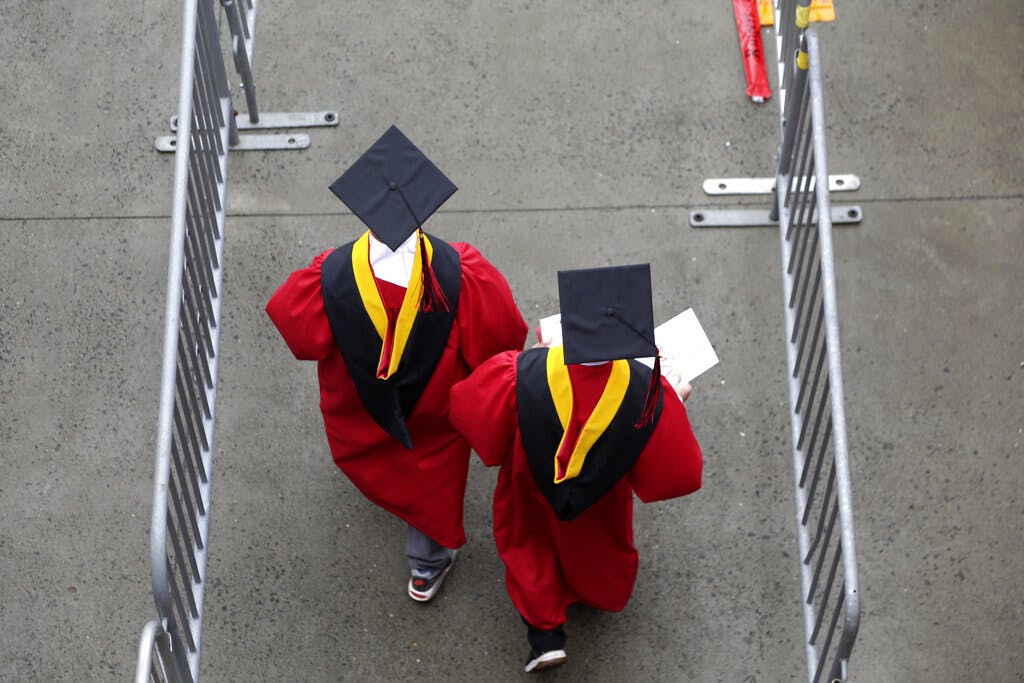As Elite Education Falls in Public Esteem, Trade Schools Rise Among a New Generation
Why pay up to $100,000 for one year of college when you can make that same amount working a technical job that doesn’t require a college diploma?

More and more members of Gen Z are opting for trade schools over a liberal arts education, with many college campuses bracing for a drop in enrollment that researchers call a “demographic cliff.”
Vocational-focused community colleges saw an enrollment increase of 16 percent last year — the highest rate since 2018 when the National Student Clearinghouse began tracking that figure. There was a 23 percent surge in students studying construction trades and a 7 percent increase in HVAC and vehicle maintenance and repair programs in 2023 compared to the year before.
That trend reflects the increasing allure of high-paying technical jobs. Data from the payroll services provider, ADP, disclose that the median pay for new construction hires was $48,089 last year, compared to $39,520 for professional services new hires. The fastest-growing job in America today is a wind turbine service technician, who can make up to $103,000 without a college degree.
Most top-paid job postings still require an advanced degree, according to the career site Ladder. Yet data show that wages at the bottom end of the income distribution — say, for grocery store employees — are growing faster than those at the top end, a Carleton College professor, Nathan Grawe, tells the Sun. That helps explain the coming decline in the number of college students in America that he calls a “demographic cliff.”
Mr. Grawe, who published the book, “Demographics and the Demand for Higher Education,” predicts fewer young persons reaching the college-going age in 2026. That will mark 18 years since the Great Recession was met with a plummeting birth rate, a decline that has only accelerated.
Elite universities that enroll small numbers of students will likely recruit just fine. Less prestigious four-year colleges and two-year colleges could struggle to fill up classes. They will be hit with a “double whammy” of smaller cohorts and a “shift in taste toward the trade schools, if that trend continues,” Mr. Grawe says. “They’re already seeing declining enrollments and grappling with budget pressures that result from that.”
It’s easy to see why students are turning their backs on getting a diploma. As costs skyrocket, student debts surge, and the promise of occupational reward hangs in balance, going to college today is much more of a gamble for one’s future than it used to be.
In 2011, 86 percent of college graduates said that college had been a good investment for them personally, Pew Research Center reported. Their incomes reflected this investment. Now, only about a third of Americans now express a lot of confidence in higher education. According to Gallup polling, in 2013, 74 percent of adults aged between 18 and 29 years said college was “very important,” a number which fell to 41 percent just six years later.
“On the political right, we have people questioning some of the social benefits of what’s being offered at four-year institutions, and that has, in some conservative circles, led people toward supporting enrollment in two-year colleges, trade schools, and vocational-technical schools,” Mr. Grawe says.
“At the same time, we’ve got people on the political left who are also questioning the returns to higher ed.” He cites the free college movement, which appears to be gaining momentum as several states have passed tuition-free initiatives.
The average cost of college in America is $36,436 a student a year, a figure that has more than doubled in the 21st century. Some Vanderbilt students will have $100,000 in total expenses for the 2024-25 school year, the New York Times reports. President Biden’s attempts to forgive student loans have faced legal challenges.
Americans souring on higher education, on both the right and the left, say it’s not worth the private investment. “Why would we talk about free college for all if college is going to increase your earning potential?” Mr. Grawe says. “We don’t generally think that valuable things should be offered for free.”
That disillusionment is largely expressed toward America’s most competitive schools, which have recently been accused of prioritizing diversity and inclusion over excellence. “I’m not anticipating that Harvard is going to be struggling for students,” Mr. Grawe says. “But what Harvard does and how the country perceives them does matter, I think, to higher ed more broadly.”

